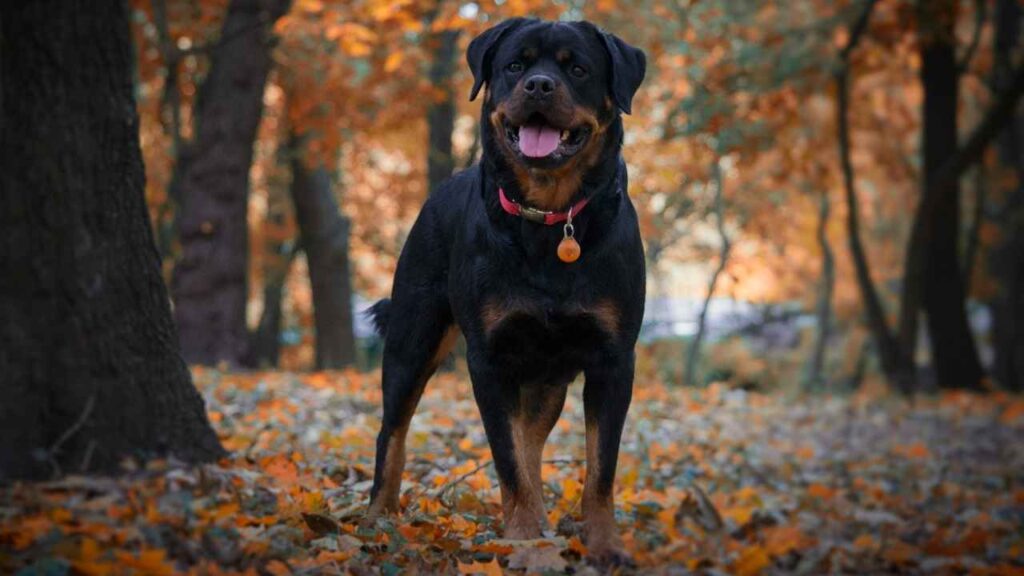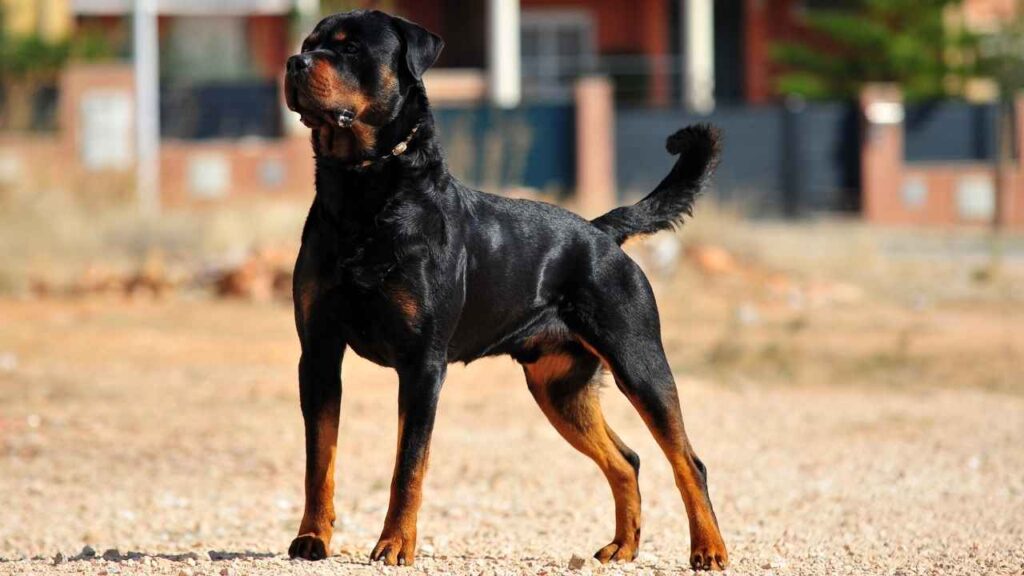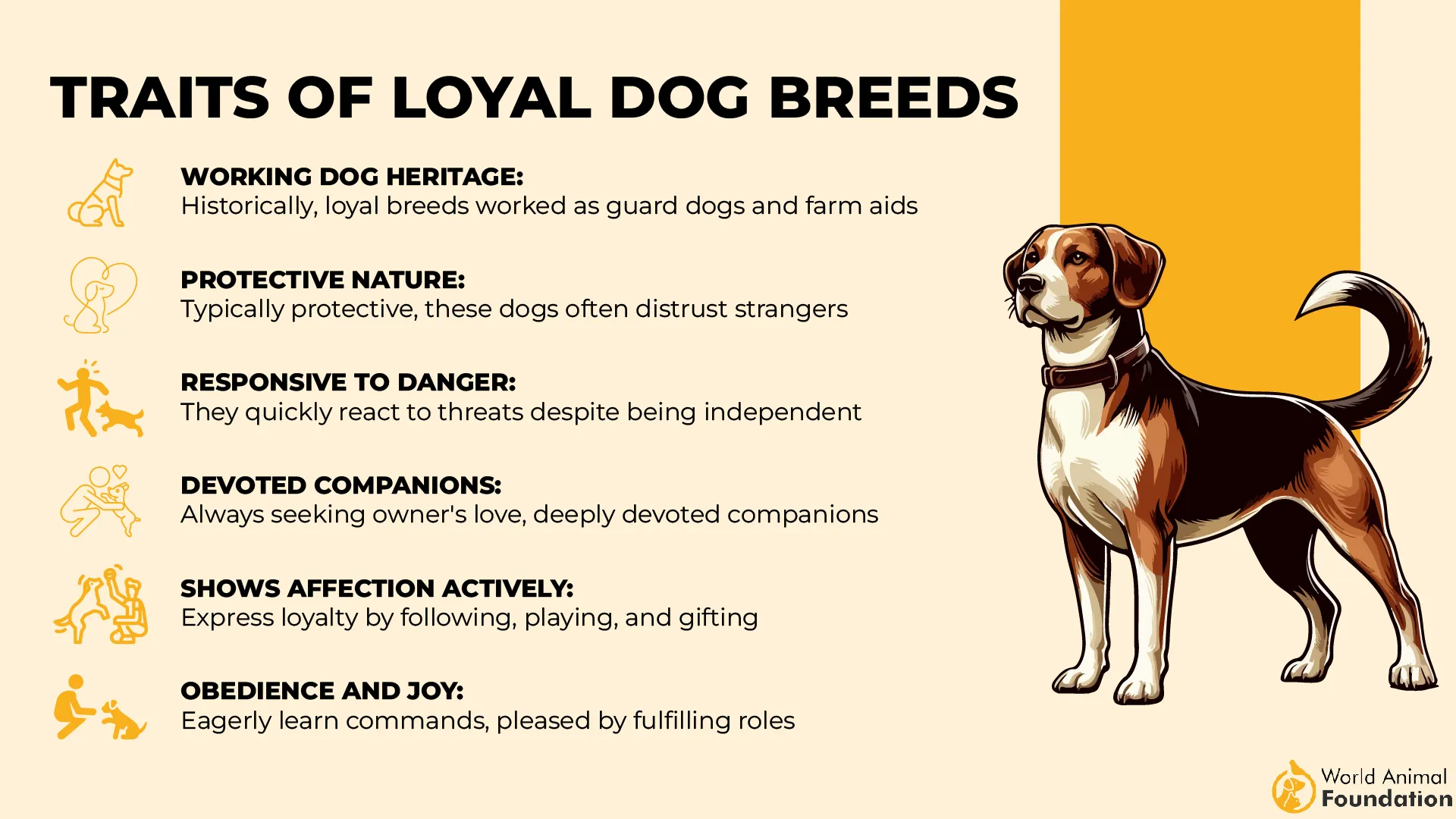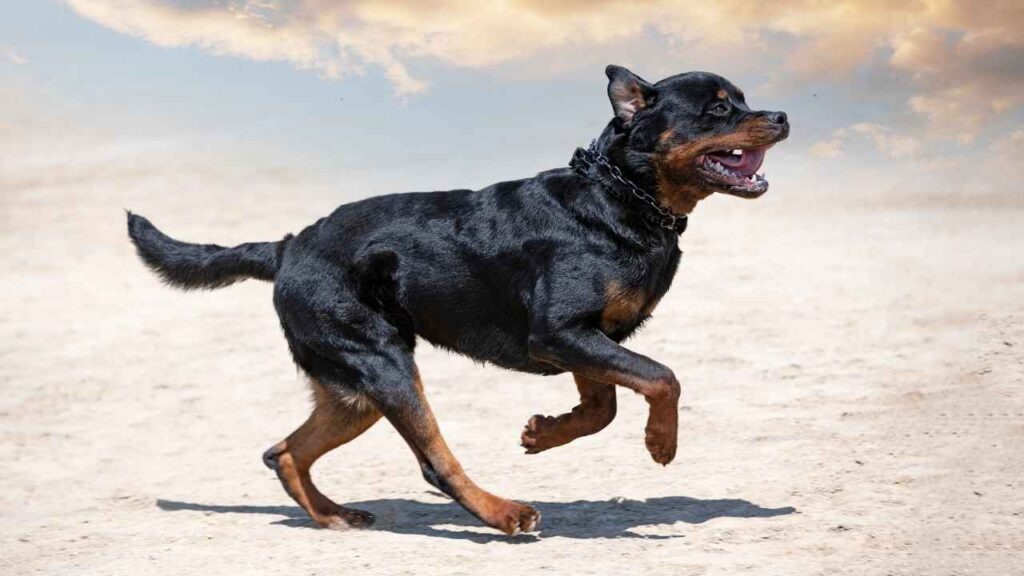Rottweiler is one of the most popular dog breeds. Originating from Germany, these working dogs are considered to be the descendants of the Mastiffs from ancient Rome. Rottweiler dogs exude intelligence, power, and loyalty.
There are two different types of Rottweilers: German and American. Now, the question is: if Rotties hail from Germany, what on Earth is an American Rottweiler? Well, keep reading because this article is going to explain all the differences between these two!
Do you know? According to the AKC, Rottweiler earns the nickname “the Butcher’s dog.” From the middle ages to 1900s, Rotties used to accompany local butchers, protecting them from thieves. They also served as herding dogs.
We will discuss everything from their enticing history to distinguishing traits, behavioral differences, and much more. Have a look at some of the major differences between the German and American Rottweilers.
German vs. American Rottweiler
German Rottweilers are quite similar to their American counterparts. However, both can be distinguished depending on some characteristics highlighted by the Allgemeiner Deutscher Rottweiler-Club (ADRK) and the American Kennel Club.

The foremost difference between the German Rottweiler vs American is in their origins. Apart from the dog’s birthplace, a Rottie has to be a perfect companion dog. They should have a calm and serene temperament, with a sharp mind.
The dogs should neither be violent nor hurt others. Also, they should be compatible to serve as security dogs, working dogs, family dogs, and guide dogs for the disabled or blind. The two breeds can also be differentiated based on tail docking.
|
German Rottweiler |
American Rottweiler | |
|
Height |
24 to 27 inches |
22 to 27 inches |
|
Weight |
80 to 130 pounds |
80 to 130 pounds |
|
Exercise Needs |
More than 2 hours/day |
More than 2 hours/day |
|
Coat |
Dense and short |
Dense and short, can be long sometimes |
|
Grooming Needs |
Minimal |
Minimal |
|
Trainability |
Highly intelligent, needs early socialization |
Highly intelligent, needs proper training |
Origins: German vs. American Rottweiler
If your Rottweiler was bred in Germany, it is a German Rottweiler. So, all Rotties hailing from Germany are referred to as German Rottweilers.
On the other hand, if your Rottweiler was born in America, you can safely assume that your dog is an American Rottie. Therefore, all Rotties born in America are called American Rottweilers.
Physical Traits: Build, Size, and Coloring
While both look quite similar in appearance, here is the difference between the physical characteristics of the German Rottweiler vs. American.
Build
Many German Rottweilers are often the same weight and height as American Rottweilers. However, German Rotties are a bit stockier and more muscular with a broader body appearance. Also, the German Rottweiler has a broader nose.

American Rottweilers’ appearance, on the other hand, is sleek, less muscular, and less broad when compared to their German counterparts. They tend to have a more athletic body and a smaller nose. They have medium-length heads, broader between the ears.

German Rotties have thick necks whereas their American relatives have a medium sized arched neck. Moreover, the American Rottweilers have a slightly broader ribcage. Almond shaped eyes and triangular ears are the common features of both Rottweiler breeds.
Size
While both German and the American Rottweiler fall within the same breed, they can differ in sizes. To be very precise, German Rottweilers appear slightly larger than American Rotties. Male German Rottie stands 27 feet tall at the shoulder whereas a female can reach a height of 24 to 25 inches.

American Rottweilers are only a few centimeters smaller in size. They stand 22 to 27 inches at the shoulder. Both German and American Rottweilers can weigh around 80 to 130 pounds.
Coat Color
German Rottweilers have a short coat that requires minimal grooming. American Rottweilers can have a long coat as well, but this is not a standard. The ADRK has strict breed standards for coat coloring. Acceptable coat colors are black and brown, black and tan, and black and mahogany.

The AKC, on the contrary, is less strict regarding coat colors and adds blue and red variations to the breed standard.
Tail Docking
The ADRK also has a very strict “no docking rule.” They do not consider a dog an ADRK-recognized Rottweiler if it has a docked tail. PDSA explains that tail docking is an international practice in which an animal’s tail is removed. There are two ways to do so:
Snipping off the tail using surgical scissors.
Cutting off the blood flow towards the tail using a special band, causing the tail to fall off.
However, the American Kennel Club’s breed standards are a bit different. Unlike ADRK, it allows tail docking.
Health Issues
German Rotties are specifically bred to have fewer health problems often associated with large dogs such as elbow and hip dysplasia. The ADRK does not allow the sale of puppies with any genetic disorders. It means that a German Rottweiler will definitely be expensive.
If the pet owner does not pass a “breed suitability test,” the ADRK does not register their pups. This standard ensures that only the best German Rottweilers without any genetic anomalies reproduce.

While American Rottweilers are more vulnerable to genetic problems, they are far more affordable. If you are looking for a canine companion with a leaner build, you should opt for the American Rottweiler.
Temperament and Behavioral Differences
Behavior
The German Rottweiler was specially bred to be a companion dog. The ADRK has set a high bar for Rottweiler’s behavior and temperament. The ADRK claims that a German Rottweiler should be good-natured, obedient, and serene.
These dogs are dependent, but an epitome of loyalty and protection. They are easygoing and playful with children. They form deep bonds with the pets they are raised along with.

American Rottweilers share the traits like loyalty, immense intelligence, and easy trainability with their German cousins. They make equally good family dogs and are good with the kids just like their German counterparts.
Trainability
German Rottweilers are super-smart dogs that can learn a variety of commands quickly. They respond well to training. However, a pro tip is to start the training as early as possible.
American Rottweilers, however, tend to be reserved around other animals and new faces. They also become aggressive towards the dogs of the same gender. Just like their German relatives, American Rotties also respond well to training and are willing to please their owners, but they can be relatively more stubborn.

Consistent training and early socialization is required to ensure they behave well. Consider socializing your American Rottweiler with a variety of people and other pets, and introduce them to different environments. It will help overcome aggression and other behavioral problems.
There are no significant behavioral differences between German and American Rottweilers. It is worth mentioning that every dog has its own personality and traits. We suggest that you find a reputable breeder who prioritizes health and temperament. Also, focus on training and socialization.
Which Rottweiler is Right for You?
Whether a German or American Rottweiler is the best for you depends on your personal preferences and lifestyle.
As mentioned earlier, there are some differences between the German and American Rottweilers. These differences are largely attributed to the difference in breeding practices or socialization experiences. However, there are no notable differences due to their country of origin.
While choosing between the two, consider your activity level, living situation, and experience with dogs. Rottweilers are highly active and need plenty of exercise. So, they are ideal for people who have large spaces and enough time.
Lastly, no matter whether you choose German or American Rottweiler, make sure to give them the love and affection they deserve!


